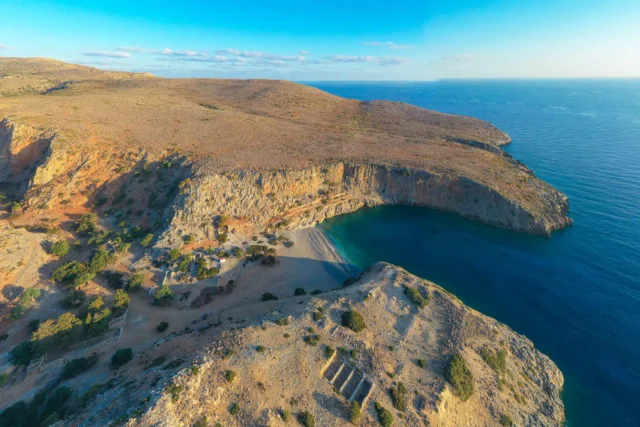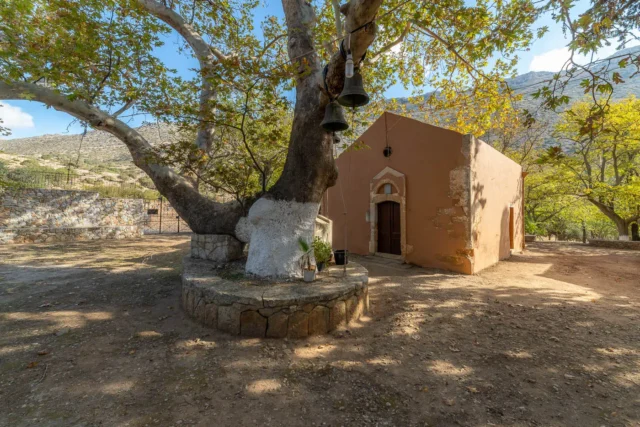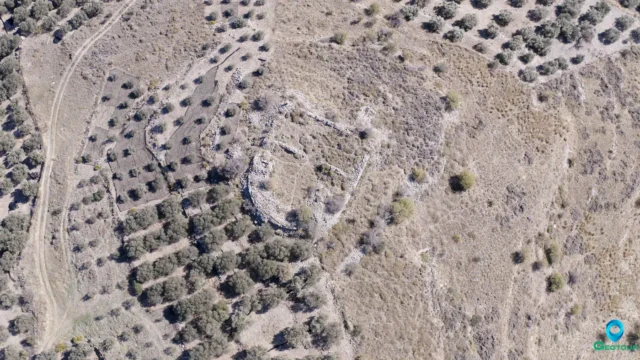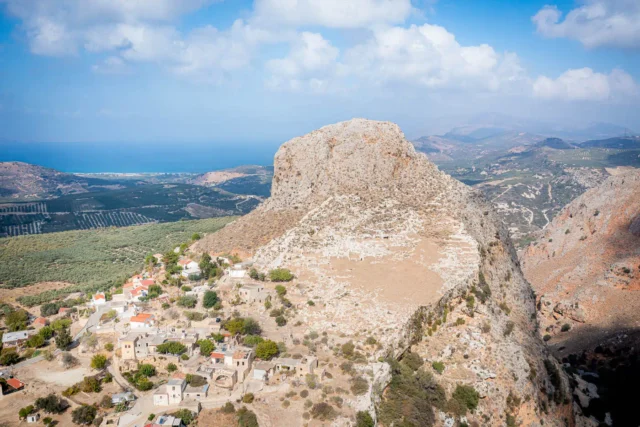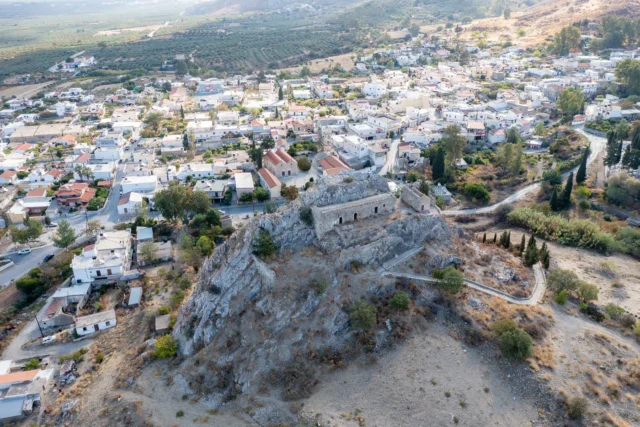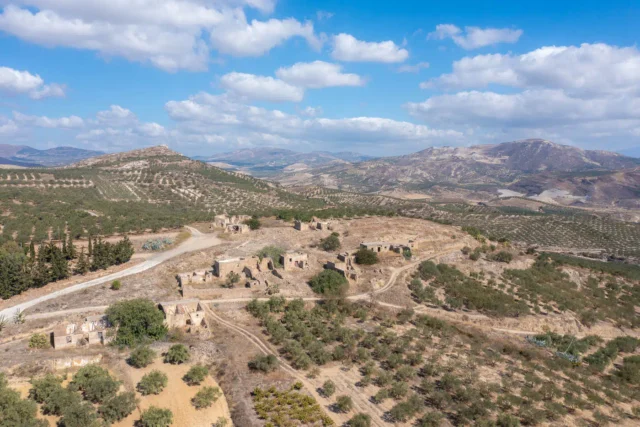829
listings found
Categories
Active filters:
Panagia Kardiotissa near Voroi
Former monastery north of Voroi, Crete. Features a double-aisled church with late 14th-century frescoes. Generally closed to the public.
The Church of Christ the Saviour in Temenia, Selino
The Church of Christ the Saviour is located in the Lazopouliana neighborhood in the village of Temenia, in the Selino region of Chania, Crete. This small church was built in […]
Ancient Elyros
Ancient Elyros, situated on Crete's 'Kefala' hill near Rodovani, originated in the Early Iron Age and thrived until Late Antiquity. Named after the mythical son of Apollo, it became a major urban center in southwestern Crete during the Classical period, known for trade and weapon manufacturing. As a leading city in the Oreioi League (formed in the 3rd century BC for security and economic reasons, including Hyrtakina, Lissos, Poikilasio, Syia, and Tarra), Elyros maintained external connections before the league's likely dissolution before 183 BC, a period when it was at war with Kydonia. The Roman era marked a time of flourishing for Elyros, evidenced by the "Philosopher of Elyros" statue. The city featured fortification walls, an aqueduct, cisterns, and a theater. Elyros minted its own coins, indicating autonomy, with emblems similar to Hyrtakina's. Its territory included the port of Lissos, a key economic contributor and religious center with an Asklepieion, as well as the coastal cities of Syia and Poikilasio. Archaeological findings suggest communication with mainland Greece, North Africa, and Southern Italy. Notably, Elyros had a local workshop producing unique glass pyxides. A rural sanctuary dedicated to Poseidon was also found in the 'Tsiskiana' area, likely under Elyros's jurisdiction.
The Ancient Port of Lissos
Lissos, an ancient Cretan port city, was a vital healing center and trade hub. It served the inland cities of Elyros, Hyrtakina, and Tarra. The sanctuary of Asklepios attracted pilgrims seeking cures.
Hyrtakina
Hyrtakina, an ancient Cretan city, thrived in the Oreia region near the White Mountains. As a member of the League of the Oreioi, it played a role in regional security and economic development. The city's strategic location on 'Kastri' hill was fortified by double walls. Hyrtakina's autonomy is evident from its unique coinage, featuring a wild goat and a bee. Trade connections extended to mainland Greece, North Africa, and Southern Italy, as shown by archaeological finds. The city's peak was in the 4th century BC, coinciding with its coin minting. Hyrtakina's agreement with Cyrene for grain supply highlights its interaction with other Mediterranean cities. The city was abandoned in Roman times.
Polyrrhenia: Fortifications and Acropolis
Polyrrhenia, an ancient city in western Crete near Kissamos, was occupied from the Iron Age to the Byzantine era. Its strategic hilltop location was protected by Hellenistic and Roman fortifications. The Acropolis featured a Byzantine castle, an early Christian basilica, and a potential temple to Artemis. A sophisticated water system, including an aqueduct with a defensive tower and underground reservoirs, sustained the population. The 19th-century Church of the 99 Holy Fathers incorporates ancient materials from the ruins.
Polyrrhenia
An Ancient City of Western Crete Polyrrhenia, also known as Polyrrenion, was a city in ancient Crete, located on the northern coast of the western part of the island . […]
The Archaeological Museum of Chania
A Journey Through Time The Archaeological Museum of Chania invites visitors on a captivating journey through the rich history of Western Crete, spanning from the Paleolithic era to the Roman […]
The Ancient City of Falasarna
An ancient city on western Crete, with history from the Neolithic (c. 3500 BCE) to its Roman conquest in 67 BCE. A fortified Hellenistic maritime power involved in trade and piracy, it rivaled Polyrrhenia. Excavations have uncovered a Temple of Demeter with Archaic Daedalic offerings and a 4th-century BCE fortified harbor. The harbor's towers were destroyed by the 365 CE earthquake. Today, the site is a protected archaeological park with ongoing research.
Minoan tholos tomb at Maleme
The Minoan tholos tomb at Maleme, Crete, is a remarkable example of Bronze Age funerary architecture. Located near the village of Maleme in western Crete, the tomb is known for […]
Rokka archaeological site
Located inland in Kissamos, western Crete, on the slopes of Troulli hill. This protected archaeological site dates to the Hellenistic period (4th-2nd century BC). Its identity is debated, possibly being the ancient city of Keraia or linked to the "Koinon ton Modaion." The settlement features unique architecture with houses, cisterns, and stairways carved into the limestone. A necropolis with rock-cut tombs has yielded artifacts. The modern village hosts the annual Giortes Rokkas festival to promote cultural heritage and repopulation.
Pergamos Ancient City
Pergamos (Πέργαμος) was a city of ancient Crete, founded in the 8th century BC. It was one of the hundred cities of Crete mentioned by Homer in his works. It […]
Katre, an Ancient City of Crete
Katre, an ancient city of Crete, is shrouded in mystery and intrigue. While historical and archaeological evidence about Katre is limited, its strategic location and mythological connections suggest a place […]
Raptis, the Abandoned Settlement near Ano Moulia
Raptis, an abandoned settlement in Crete near Gergeri, features Venetian origins, as indicated by a 1414 document, and an Ottoman-era "koules" observation post. Situated east of the Lithaios River, it overlooks the Messara plain. The village, built with local fieldstones, has been uninhabited since the 1960s, preserving traditional architecture. It once exported grain and cheese to Italy, suggesting prior prosperity. The reasons for its abandonment remain unclear. The site's history spans the Venetian (1204-1669) and Ottoman (1669-1898) periods, and restoration for visitor accommodations has been proposed.
Charakas Fortress
Charakas Fortress, located on the Charaki rock in Crete's Asterousia Mountains, features Venetian fortifications built over a Middle Byzantine site. Visible remnants include a main building with three vaulted chambers, two rectangular towers, and the Church of the Transfiguration of the Savior. The fortress, strategically positioned for panoramic views, was likely constructed in the 14th century and later abandoned during Ottoman rule. The western side, the most accessible, is fortified with a double perimeter wall, while the eastern side's cliffs offered natural defense. Architectural details include rainwater collection systems and lime mortar floors carved into the rock. The site reflects the region's medieval history and Venetian defensive strategies.
The Abandoned Village of Velouli near Apoini
Velouli, a deserted village 44 km south of Heraklion, Crete, boasts a 400-year history. Once inhabited by Cretan Muslims and Asia Minor refugees, it played a key role in WWII's Cretan resistance. The Valavanis family housed resistance figures like Podias, Petrakogiorgis, and the Bantouvas brothers. The village features the Byzantine church of Panagia Velouliani, with an inscription dating back to 1209. Though abandoned today, with residents migrating to Apoini, Velouli's deserted houses and resilient church stand as testaments to its rich past.










